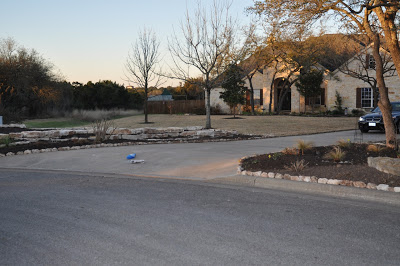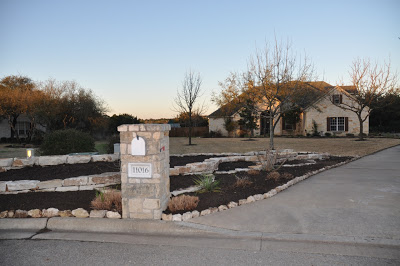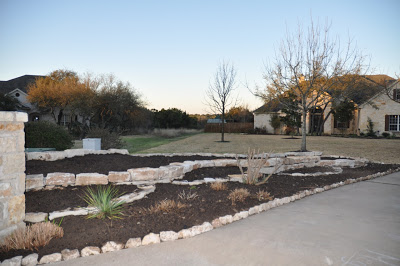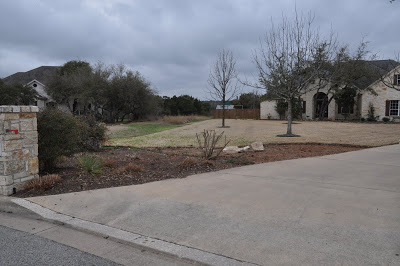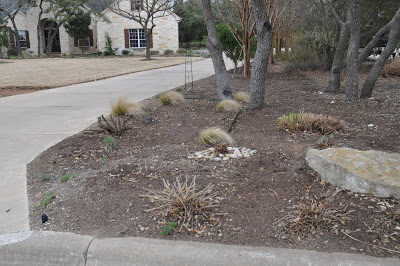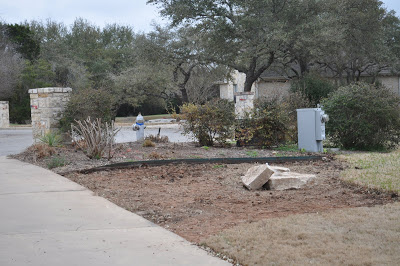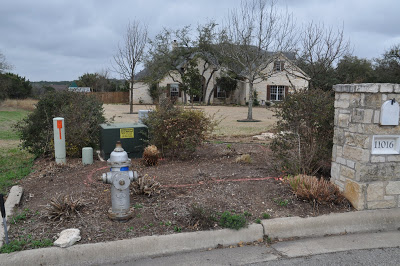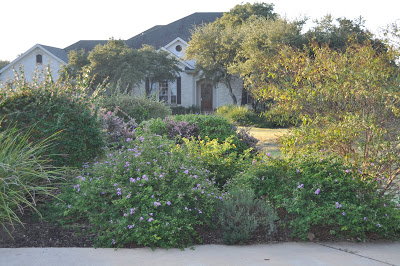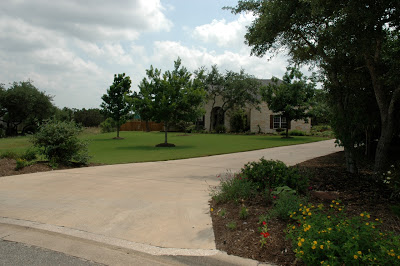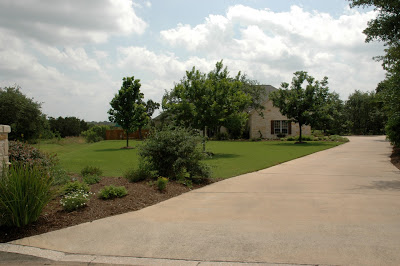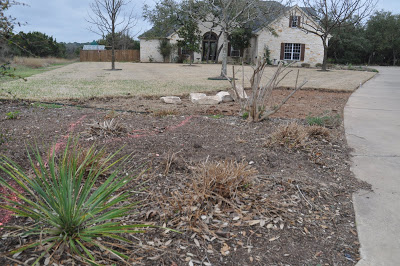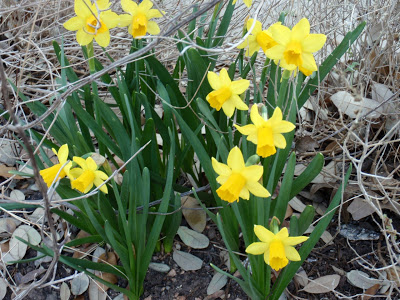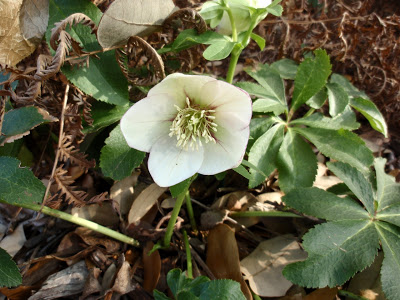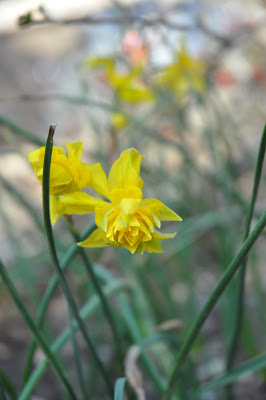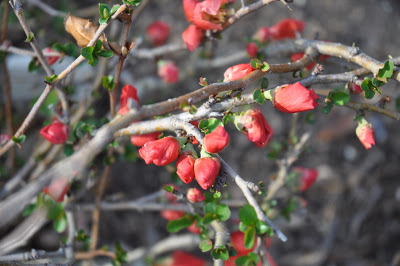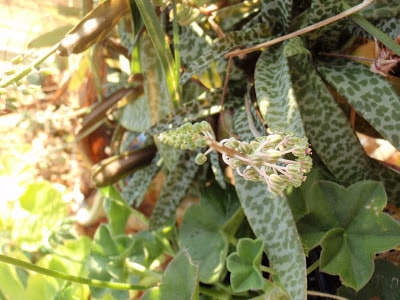New bed well on its way…
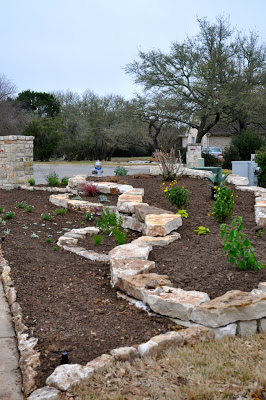 On Friday, many of the plants for the new bed went into their new homes.
On Friday, many of the plants for the new bed went into their new homes.
I wasn’t able to get several of the things on my list, but I did get most of them, so this is a good start.
And I was able to transplant all of the plants from the preious bed — either to more appropriate spaces to fit the design of the new bed, or into other beds where I had holes.
I’m also very excited that I was able to harvest from my own little volunteer ‘incubator’ of Lamb’s ears. They threw off seed from their blooms and new babies started growing in the playscape gravel next to the cutting garden. More than 20 of them were pulled from the gravel and put into the new bed. If you get out your magnifying glass, you can see them on the lowest level of the bed next to the Blackfoot daisies. The are the silver dots in this photo! What you can’t see just below the Lamb’s ears are several mounding Pink Texas Skullcaps, Skutellaria suffrutescens.
Visible only in this photo in the very back is my transplanted Butterfly Bush, Buddleja, which may or may not be ‘Black Knight.’ It is a deep royal purple and very vibrant. (In the process of researching the botanical name for my variety, I learned that is isn’t spelled Buddleia, which is how I’ve always spelled it, but Buddleja. Saw it first on Wikipedia and didn’t trust them as a horticultural resource, but then I confirmed it with Dave’s Garden, which I do trust! Thought that was interesting trivia.) Around the base of it, I transplanted several Lantana montevidensis, ‘Trailing Purple.’
 The pinkish grass is Fireworks Purple Foutain Grass – Pennisetum rubrum ‘Fireworks.’ Next to it, Silver Ponyfoot, Dichondra argentea.
The pinkish grass is Fireworks Purple Foutain Grass – Pennisetum rubrum ‘Fireworks.’ Next to it, Silver Ponyfoot, Dichondra argentea.

 Up here is Artemesia powis castle which I hope will spill over the wall to mix with Blue Velvet Trailing Verbena, Verbena hybrida.
Up here is Artemesia powis castle which I hope will spill over the wall to mix with Blue Velvet Trailing Verbena, Verbena hybrida.
 Obstructing your new here is a stick-like native persimmon. I was going to take it out, but I may prune it a bit and look at it for a while to see if it will fit in and can stay. Look closely behind it and you will see a Salvia Greggii ‘Hot pink.’ Next to it are three Daimianita daisies, Chrysactinia mexicana. You can see them better below. Then on the lower level, almost out of sight, are 5 gray Santolinas, Santolina chamaecyarissus.
Obstructing your new here is a stick-like native persimmon. I was going to take it out, but I may prune it a bit and look at it for a while to see if it will fit in and can stay. Look closely behind it and you will see a Salvia Greggii ‘Hot pink.’ Next to it are three Daimianita daisies, Chrysactinia mexicana. You can see them better below. Then on the lower level, almost out of sight, are 5 gray Santolinas, Santolina chamaecyarissus.

 On the upper level there are three Euryops chrysanthemoides with some Sweet Potato vines Ipomoea batatas to surround it and trail down the wall around the Salvia Mesa ‘purple‘ and the Mexican Feather grasses Nasella tenuissima. Blackfoot daisies and Lamb’s ears in foreground. To the left of the Euryops will be a large blue Agave, a small boulder and some ground cover of Purple Wine Cups.
On the upper level there are three Euryops chrysanthemoides with some Sweet Potato vines Ipomoea batatas to surround it and trail down the wall around the Salvia Mesa ‘purple‘ and the Mexican Feather grasses Nasella tenuissima. Blackfoot daisies and Lamb’s ears in foreground. To the left of the Euryops will be a large blue Agave, a small boulder and some ground cover of Purple Wine Cups.
So, that’s it so far. I’m quite happy with this very xeric bed. Still searching for Mexican Oregano, LARGE Blue Agave, Color guard yucca, and a Queen Victoria agave or something similar with the upright form and strings! And another ground cover.

